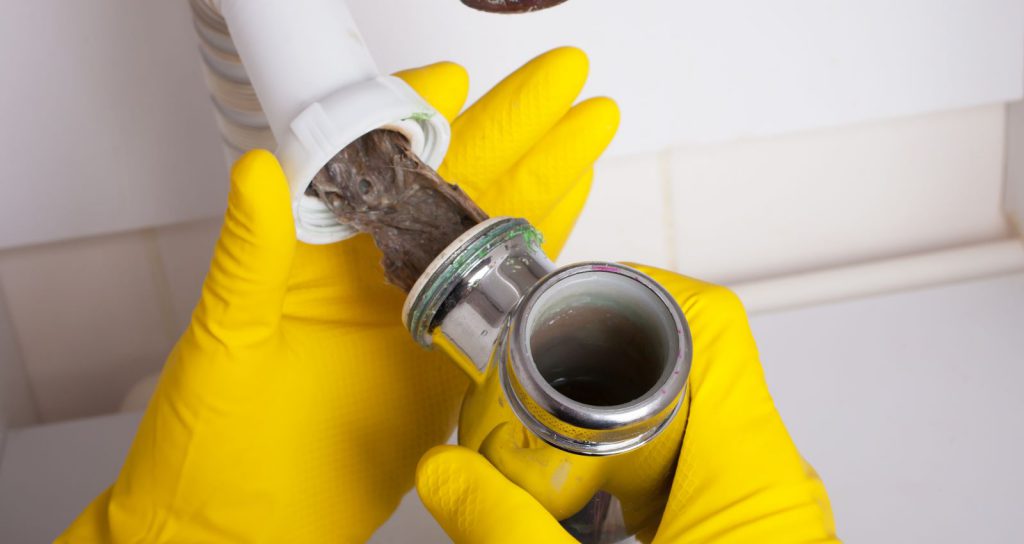Are you Bored in the House?
This may be a great time to take care of a few of those household chores that go undone for too long. I mean, when was the last time that you cleaned your plumbing? Let’s face facts, a clogged toilet or drain is the last thing you need right now – so this is actually a very practical and timely tip.
If you’re looking for simple and productive ways to kill some time, taking care of your plumbing fixtures is a great idea. Each of these cleaning and maintenance projects is easy, quick, and doesn’t require very many tools.
Clean your Drains
Most drain clogs are a result of accumulation of debris over time. Gunk and grime builds up inside your drain pipes.. Eventually, this can turn into a clogged drain. Clearing out the gunk early will help you prevent most future clogs. We recommend periodically cleaning out your sink, shower, and tub drains even if they don’t seem clogged. It’s good preventative maintenance and now is the perfect time!
All you need is white vinegar, baking soda, and hot water.
First, pour roughly ½ a cup of baking soda down your drain. Follow that up with ½ a cup of white vinegar and let the mixture sit for 15 minutes. While you’re waiting, repeat this process on each of your other drains.
Boil one cup of water per drain you’re cleaning. After 15 minutes, pour one cup of your hot water down each drain. The chemical reaction of the baking soda and vinegar breaks up the gunk in your drains, and then the hot water flushes it away.
Done. Easy-Peasy.
Clean Your Traps
The “trap” is the curved pipe beneath every sink.. Depending on the shape of their curves, traps are sometimes called “p-traps,” “s-traps,” or “u-traps.” The curve of a trap is designed to retain some of the water you flush down the drain. This water creates an air seal that prevents sewer gases from rising back up through the drain – causing odors. Unfortunately, traps frequently retain the other items you inadvertently flush down the drain as well.
Fortunately, traps are easy to remove and clean.
First, find the trap under your sink. It’s curved, made of either metal or PVC, and connected to each pipe via two slip nuts. Put on rubber gloves and place a bucket beneath the trap. Detach it by loosening the slip nuts, either by hand or using a wrench. Pour everything in the trap out into the bucket. Check to make sure nothing’s caught inside the trap, then scrub it out. When you’re done cleaning, replace the trap by re-tightening the slip nuts. Run the sink to make sure everything is connected and working correctly.
Clean Your Shower Heads
Your shower may not be working as well as it used to. Have you noticed? The cause of the problem is a surprisingly simple one: it’s probably your shower head.
Over time, scale build-up, minerals, and other gunk may clog up your shower head’s nozzles. This happens more frequently when your home has hard water. Cleaning your shower head is a quick and easy way to the most out of your showers again.
There are a couple of ways to approach this.
First, try dipping an old toothbrush in a cleaning solution and scrubbing the nozzles.
If that doesn’t work, combine ½ cup of white vinegar, ½ cup of baking soda, and 1 cup of hot water into a plastic bag. Tie the bag around the shower head so the nozzles are submerged.
Finally, if none of that works – try taking apart the shower head following the manufacturer’s directions. Locate the filter inside the shower head and clean it out in the sink. While the sho9wer head is apart, you can also scrub out the nozzles from the inside just to be safe.
Clean Mold Out of Shower Grout
Mold spores are everywhere. Mold can spread in any environment conducive to its growth. Mold grows in dark, humid environments, which means it can be a real problem in bathrooms–particular in showers. The space between shower tiles is the perfect place for mold to get a foothold.
Over time, mold growth could get out of hand and spread to other parts of your bathroom. If it gets bad enough, it could even have a detrimental effect on your health.
Before you get started cleaning the mold, ventilate your bathroom properly. Open the door and window if possible, and turn the overhead fan on. Next, put a cleaning solution such as white vinegar (again!) into a spray bottle. Spray the solution directly into the spaces you want to clean. Scrub the mold out using a coarse scrub brush. An old toothbrush may work well to reach between tiles. If you have caulk, you could replace any worn-out grout after cleaning.
If these ideas all sound like a good idea to you but you just don’t have the time or energy, remember – Garden City Plumbing is here to help! Yes, we do preventative maintenance and cleaning as well!

